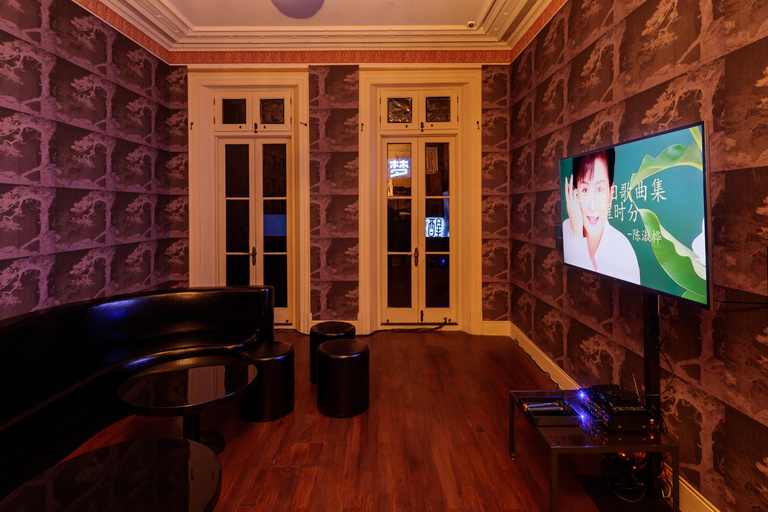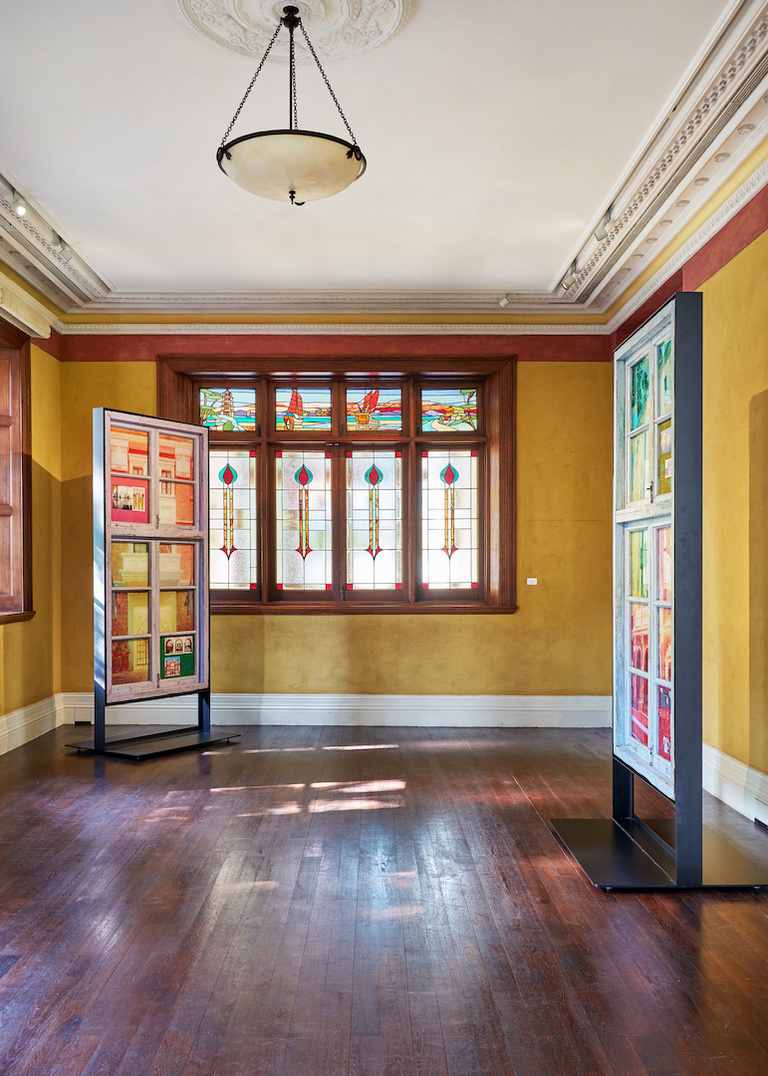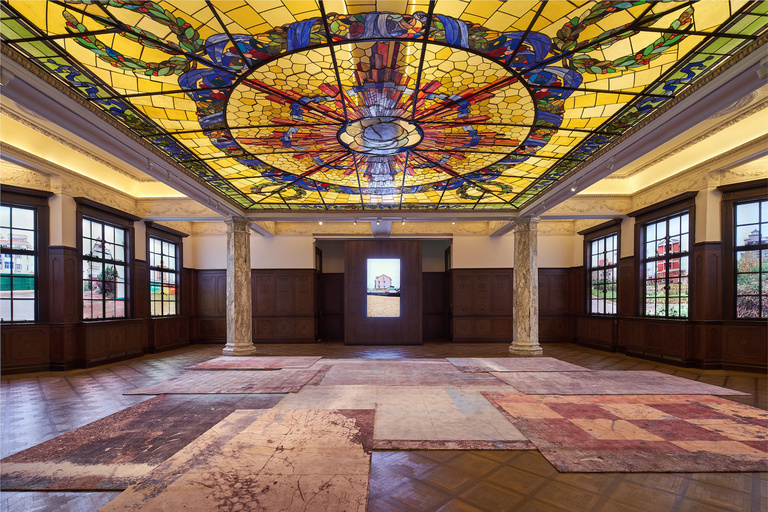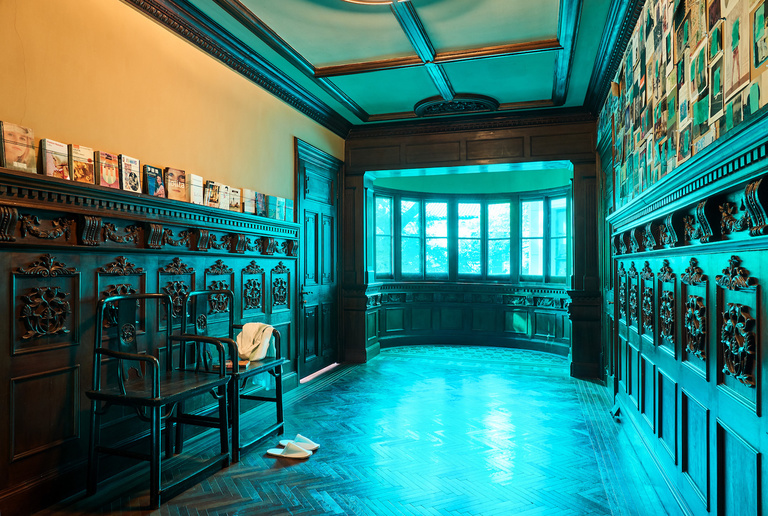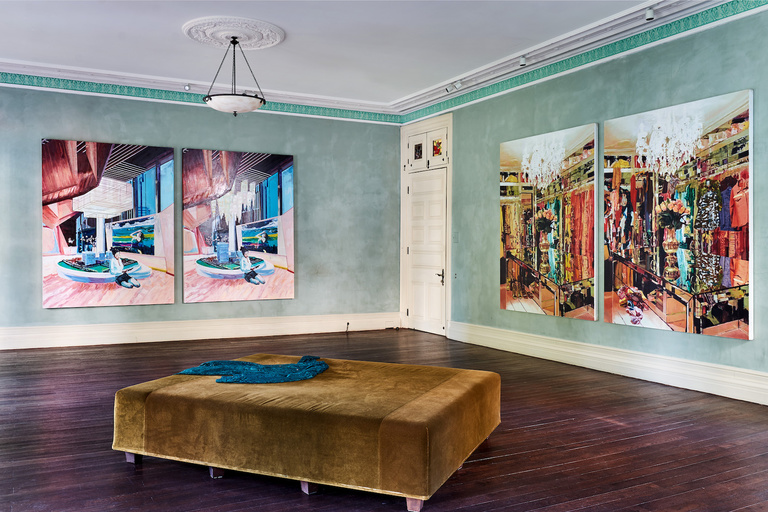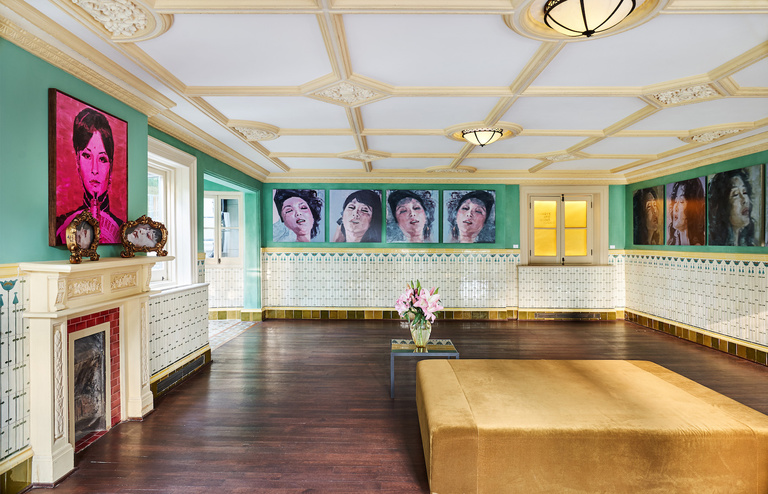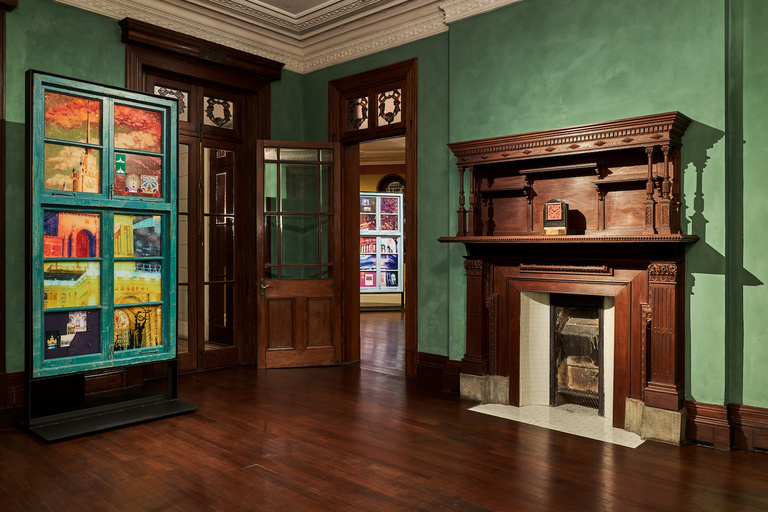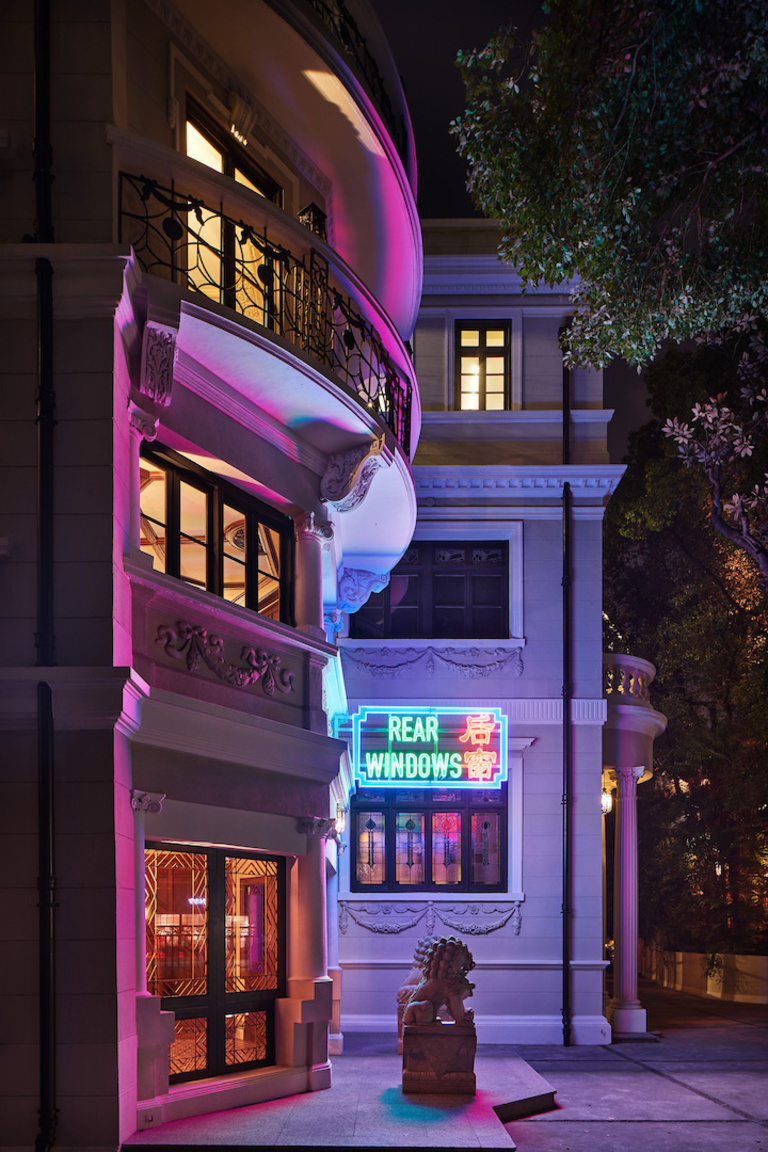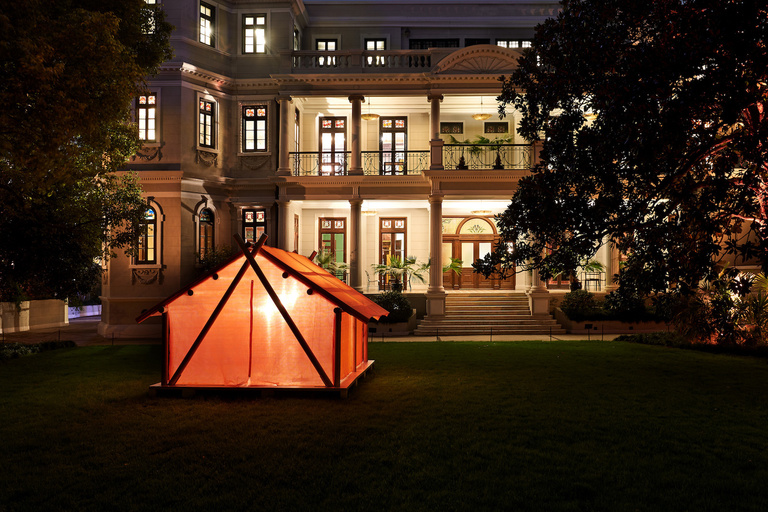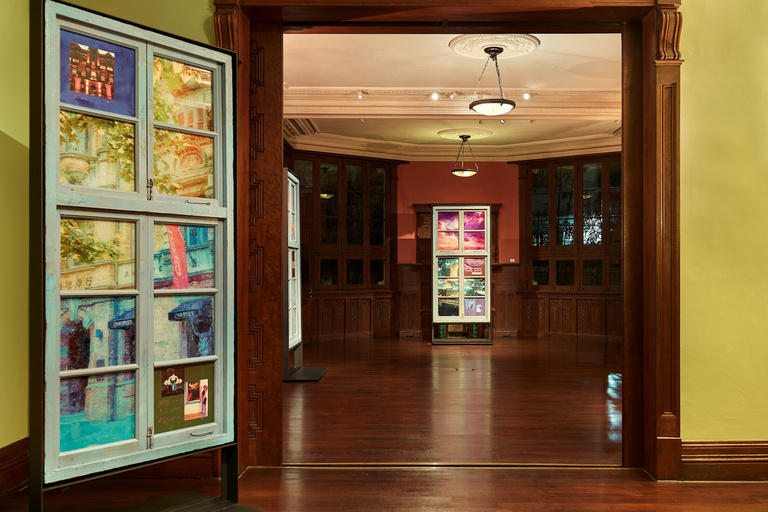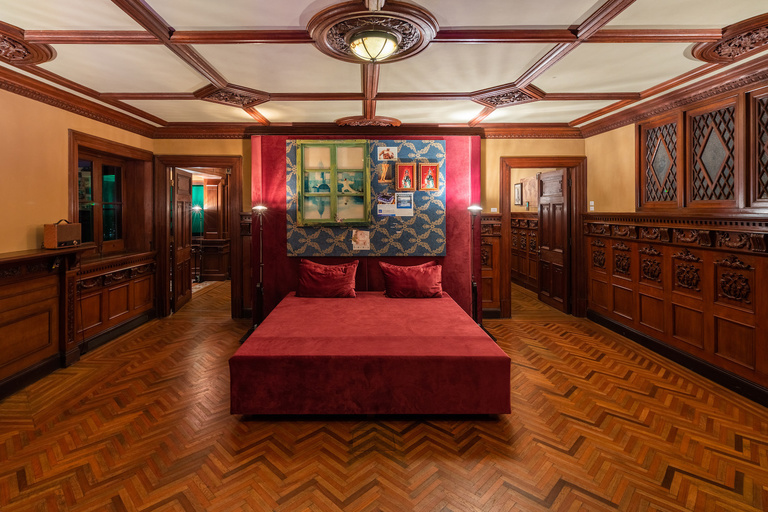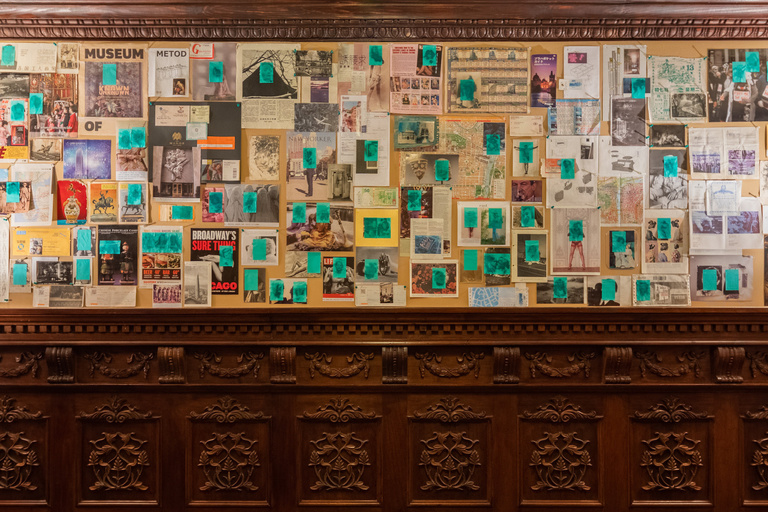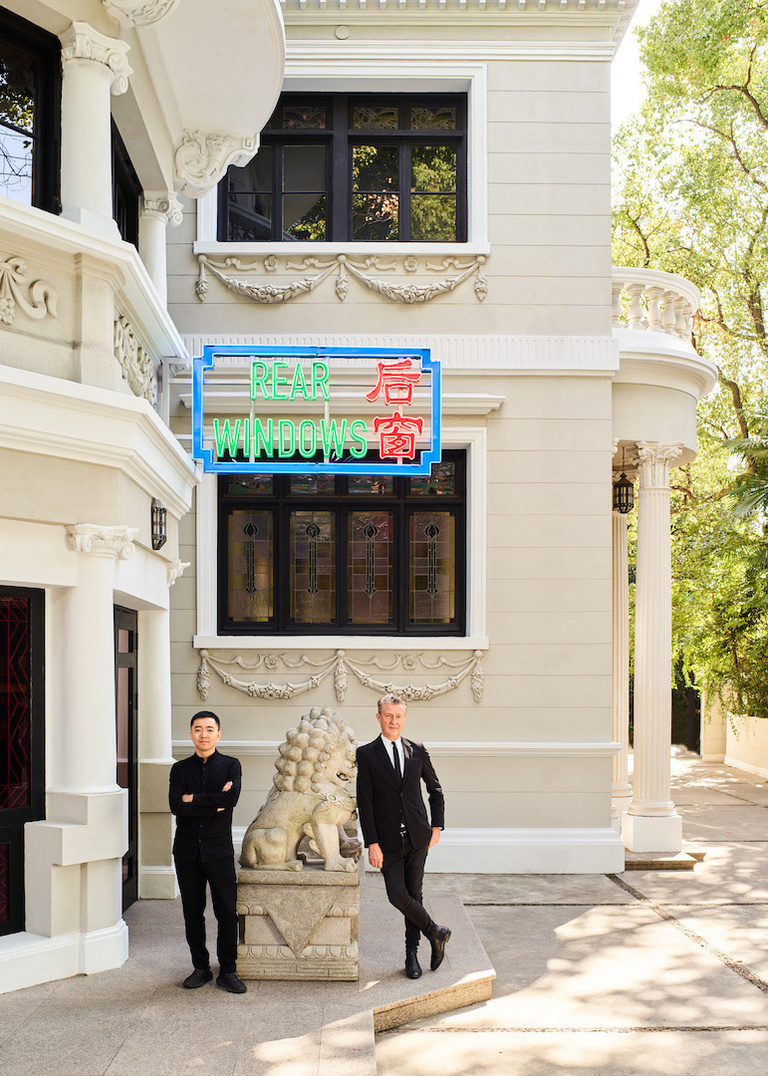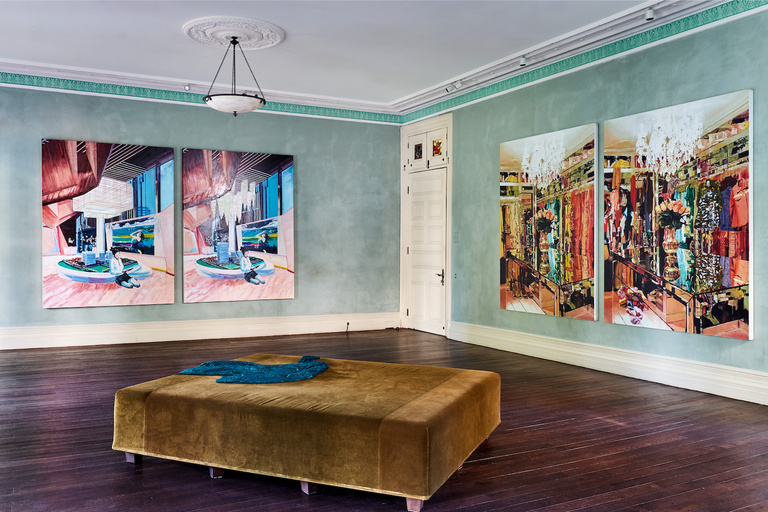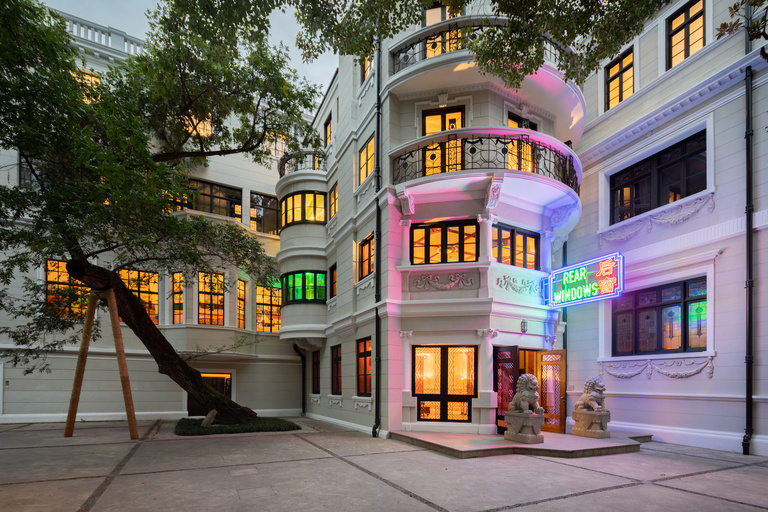
Li Qing: Rear Windows
Foundation Prada Rong Zhai, Shanghai
Exhibition "Rear Windows", Li Qing
Curated by Jérôme Sans.
November 7, 2019 — January 19, 2020
Rear Windows is an immersive and collaborative project conceived on site by the Chinese artist Li Qing as a specific storyboard, re-contextualizing the Prada Rong Zhai house and its history. Between fiction and reality, the exhibition is an odyssey throughout all the different enclaves and spaces of the house, meandering inside and out. While playing with the absence of presence in an empty house, Li Qing activates a mysterious and vibrant new dynamism to the story and connects with our contemporary existence within the Shanghai of today—a territory filled with urban myths, legends and expectations.
In Li Qing’s work, the past is used as an open treasure chest to be explored, and history becomes a set of motifs. In this sense, its presence within Rong Zhai house echoes to a wider history of societal changes in Chinese society during the past centuries and especially in the past decades. Indeed, the history of Prada Rong Zhai is a palimpsest of Shanghai’s century-old history. In the last decades, the historical 1918 residence has been the private house of a national capitalist, a public property after socialization, before being restored to become a place dedicated to art. Such a place still carries the marks of the layers of different social conditions over time and the spirits of the different people and things it has hosted. Rear Windows—inspired by the eponymous movie—deals with the Hitchcockian concept, looking out to the outside world which is changing, evolving sometimes as a way of examining our own lives. The displays in the rooms are conceived as climatic scenes to experience the act of seeing and of being seen or observed. Through some of his emblematic series of works like his Neighbor’s Window and Tetris Window series (in which he borrows the trompe l’oeil technique combining old wooden window frames with the artworks of French and other colonial artists or new architecture behind glass, that become the cultural and artistic landmarks of the Chinese urban space now), Li Qing proposes references to the city of Shanghai (or even Hangzhou, where the artist lives) that has developed into an overlapping of different spaces and periods of time, an interlaced layer of old and new buildings and stories of different social groups. Li Qing has imagined Rong Zhai as a space still used by its residents or their contemporary ghosts. The artist recreates some of the key rooms, like the ballroom, the bedroom, the bathroom, and a karaoke room, where the presence of the former occupants is suggested through artistic gestures. As a narrative story conceived through a wide range of Li Qing’s past and recent works, the exhibition unfolds as in a movie set of a film whose action is about to come. As though belonging to an imaginary society that lives in its dreams, Li Qing initiates here another form of poetry in the Rong Zhai house but also within his own work, always questioning: how to be closer to the reality of things?
"Painting is to open a window on the wall, to expand the limited space to infinity. Window is also the critical point of internal and external space. It always reminds us of our limitations and our desires."

Karaoke Room, 2019. Karaoke video, Tv screen. Li Qing, Rear Windows, Prada Rong Zhai, Shanghai, 2019 © photo: Jacky Zhang

Tetris Window· Asiatic Society, 2019. Wood, metal, Plexiglass, oil color, markers, clothes, printed Matters, aluminium-plastic, 212.5 x 106 x 10 cm. Tetris Window—Amber Building, 2019. Wood, metal, Plexiglass, oil color, clothes, printed Matters, aluminium-plastic panel, 212 x 106 x 9.5cm. Li Qing, Rear Windows, Prada Rong Zhai, Shanghai, 2019 © photo: Zhuhai

Hangzhou House Series, 2019. Series of sixteen photographs reproduced on stickers. Things you can take away, 2019. Four carpets printed with pictures of patterns of floor tiles commonly used in some houses, dimensions variable. Li Qing, Rear Windows, Prada Rong Zhai, Shanghai, 2019 © photo: Zhuhai

Writer’s Wall, 2019. Wall composition of small photos taken from magazines from different countries, newspaper cuts, postcards, maps, prints, oil absorbing sheet, bills, grease from human faces. Variable dimensions. Popular Novel, 2016–2019. Series of various editions of “Lolita” novels by Nabokov. Variable dimensions. Li Qing, Rear Windows, Prada Rong Zhai, Shanghai, 2019 © photo: Zhuhai

Finding Differences·Clothing Store (There are 8 differences in the two paintings), 2010. Diptych, Oil on Canvas, 200 x 150 cm (each) Private Collection, Chengdu. Finding Differences—Sales Lady, 2019. Diptych, oil on canvas, 200 x 150 cm (each). Li Qing, Rear Windows, Prada Rong Zhai, Shanghai, 2019 © photo: Zhuhai

Images of Mutual Undoing and Unity · Love 201901, 2019; Images of Mutual Undoing and Unity · Love 201902, 2019; Photos 90 x 90 cm x 2 cm; oil on canvas 90 x 90 cm x 2 cm (each). Li Qing, Rear Windows, Prada Rong Zhai, Shanghai, 2019 © photo: Zhuhai

Tetris Window· Exhibition Center, 2019. Wood, metal, Plexiglass, oil color, markers, clothes, printed matters, aluminium-plastic panel 212 x 106 x 10 cm. Li Qing, Rear Windows, Prada Rong Zhai, Shanghai, 2019 © photo: Zhuhai . Tetris Window· Exhibition Center, 2019

Rear Windows Neon Light, 2019. Neon sign. Li Qing, Rear Windows, Prada Rong Zhai, Shanghai, 2019 © photo: Zhuhai

8,75 m2, 2019. Cabin tent, clothes, light. Li Qing, Rear Windows, Prada Rong Zhai, Shanghai, 2019 © photo: Zhuhai




Portrait of Li Qing and Jérôme Sans, 2019. Li Qing, Rear Windows, Prada Rong Zhai, Shanghai, 2019 © photo: Zhuhai


